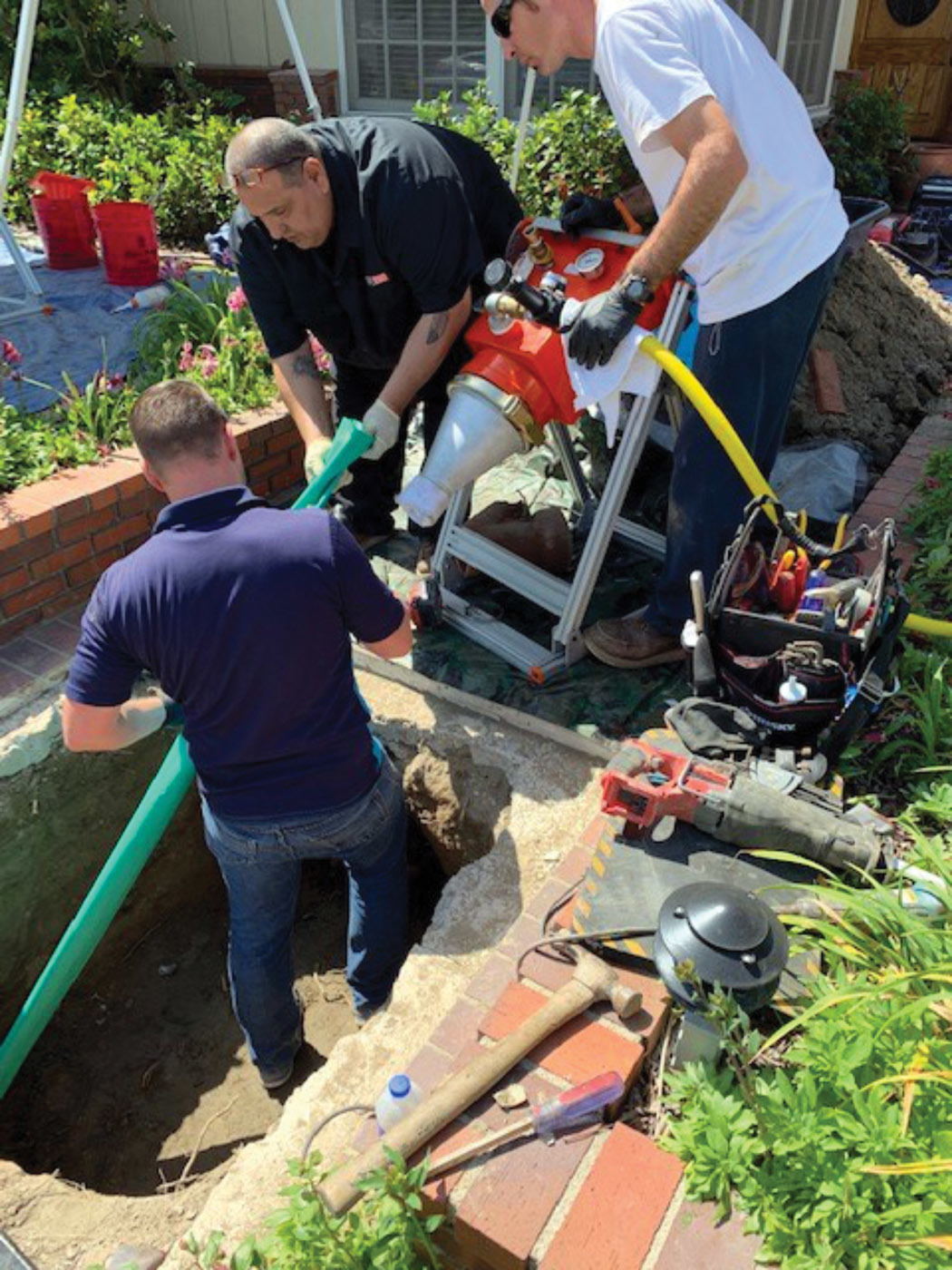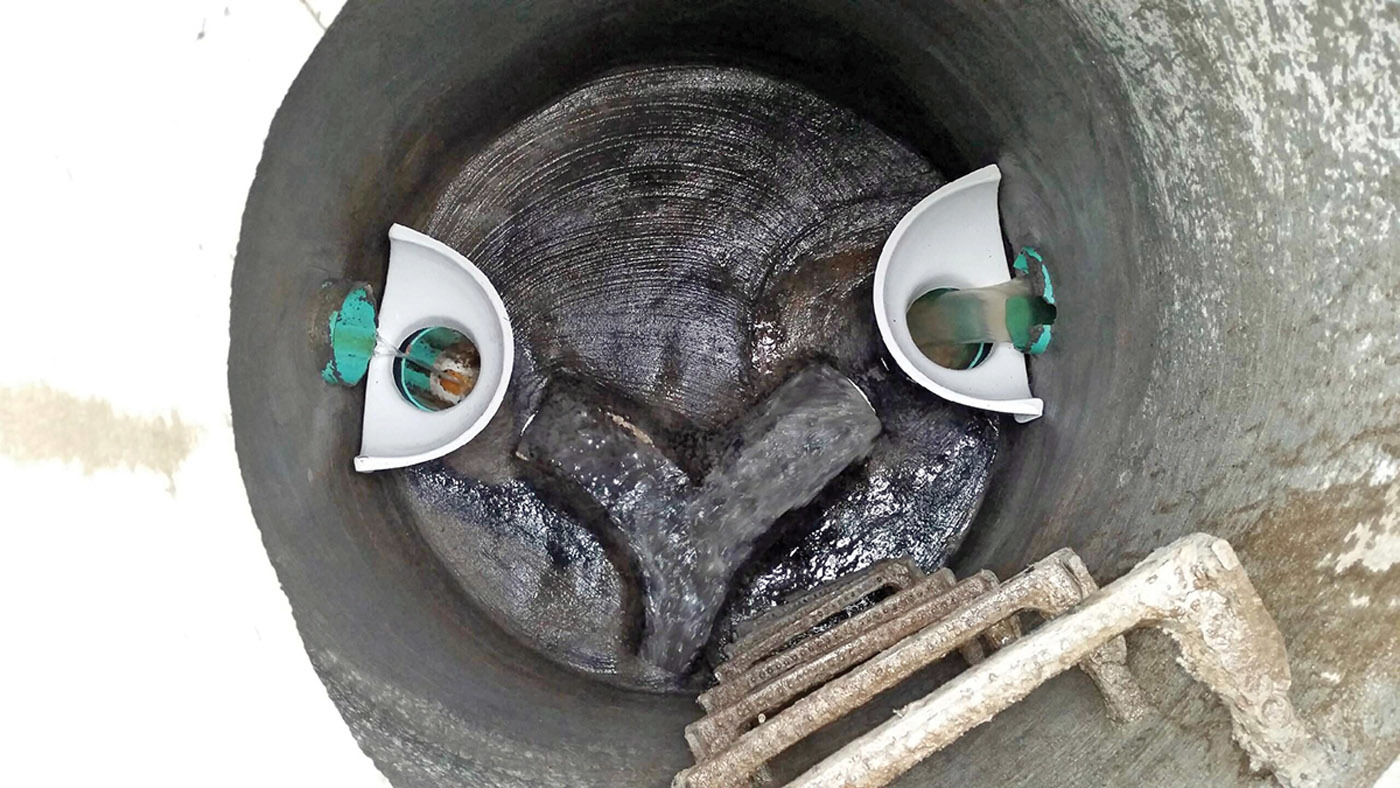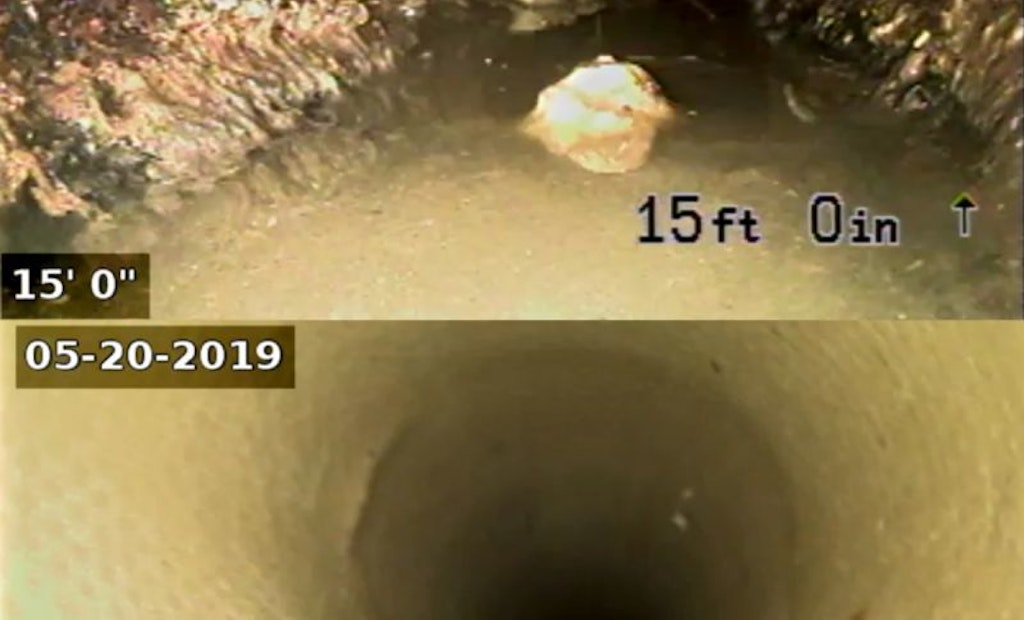Interested in Relining/Rehab?
Get Relining/Rehab articles, news and videos right in your inbox! Sign up now.
Relining/Rehab + Get AlertsDrain cleaning machine helps prepare sewer for relining
Problem: A+ Environmental of North Beach, Maryland, was called out by a plumber who said he’d been working on a sewer line that had backed up several times in the past few months. Every time he snaked the sewer, he could get the sewer line to open and drain but could never get through a certain area at approximately 23 to 25 feet.
Solution: Kevin Walker, owner of A+ Environmental, used a 4018 jetter from US Jetting and a WT StoneAge nozzle to open the sewer line, then conducted a video inspection (using a RIDGID CS6x and Mini Reel) to see several areas with roots. Walker used a ZIP-ZIP flex-shaft drain cleaner from Drain Rehab Solutions to prep the sewer line before installing the liner. Not only did the machine easily cut through the root areas, it descaled the cast iron piping to get full inside diameter. He then used a Drain Rehab Solutions 4-by-6-inch by 12-foot packer to patch-line a total of 24 feet, completing the job within six hours.
Result: “Using this equipment has given me the ability to save several hours each day when needing to patch-line more than 4 feet,” Walker says. “The ZIP-ZIP machine basically paid for itself within two jobs. It gives me the ability to cut roots faster, descale cast iron better, grind down offset clay joints and even cut out overpoured concrete.” 514-379-3544; www.drainrehabsolutions.com.

Constant root-intrusion problem fixed with CIPP solution
Problem: The Family Plumber in Los Alamitos, California, had a longtime residential customer who was having a yearly issue with root intrusion. The city got involved, as the problem was spilling into the city sewer. A camera inspection determined that 75 feet of 4-inch cast iron was getting brittle and couldn’t handle more cleaning. The homeowner had two options: dig up the yard and be without water for at least a week, or reline the pipe. After consulting the plumber, relining the pipe was chosen as the best and most economical solution.
Solution: The Family Plumber wanted to add CIPP as a service, and this was their first job. With Pipe Lining Supply’s trained technician, they did on-the-job training. They dug a small access point in the yard, using a Renssi high-speed cable machine with a 4-inch chain knocker to prepare the pipe. They then used a 4-inch green calibration tube as a preliner since there had been lots of rain and groundwater infiltrating the pipe. They used the Quik-Shot System, a portable 70 cfm compressor, 4-by-3-inch embossed liner, Quik-Pox 60 resin, and hardener. To cure the liner, they used the Quik-Heater. The entire job took four hours to complete.
Result: After final city inspection, both the homeowner and city were impressed with the completed job. The homeowner saved money and help ensure against roots in their sewer line in the future. 888-354-6464; www.pipeliningsupply.com.

Inside manhole drops replace failed outside drops
Problem: Aging outside drops in Saugus, Massachusetts, had proven difficult to access for inspection, cleaning and maintenance. Many of the drops were deteriorating, leaking or clogged. The community sought a replacement.
Solution: National Water Main Cleaning, using design documents developed by CDM Smith, was contracted to fill in the outside drops and install new inside drops from RELINER/Duran. The base of the outside drop is plugged with concrete prior to the drop being filled with pea stone, flowable fill or sand. A hydraulic cement cap is placed on top and worked to be smooth with the mainline pipe invert. The mainline pipe is then CIPP-lined, followed by rehabilitation of the manhole. After the installation of a cementitious liner in the manhole, the Inside Drop System is installed. The system consists of a fiberglass drop bowl that is bolted to the manhole wall just beneath the high-level inflow pipe, and stainless steel pipe support brackets are used to attach the drop pipe to the wall. A flexible coupler is used to connect the drop pipe to the drop bowl, and a bend is installed at the pipe base in the manhole invert. The system is easy to install and allows the drop to be cleaned and inspected from above. The system is available to accommodate internal drops ranging from 4 to 24 inches in diameter.
Result: The system eliminated the maintenance problems associated with failing outside drops. 800-508-6001; www.reliner.com.






